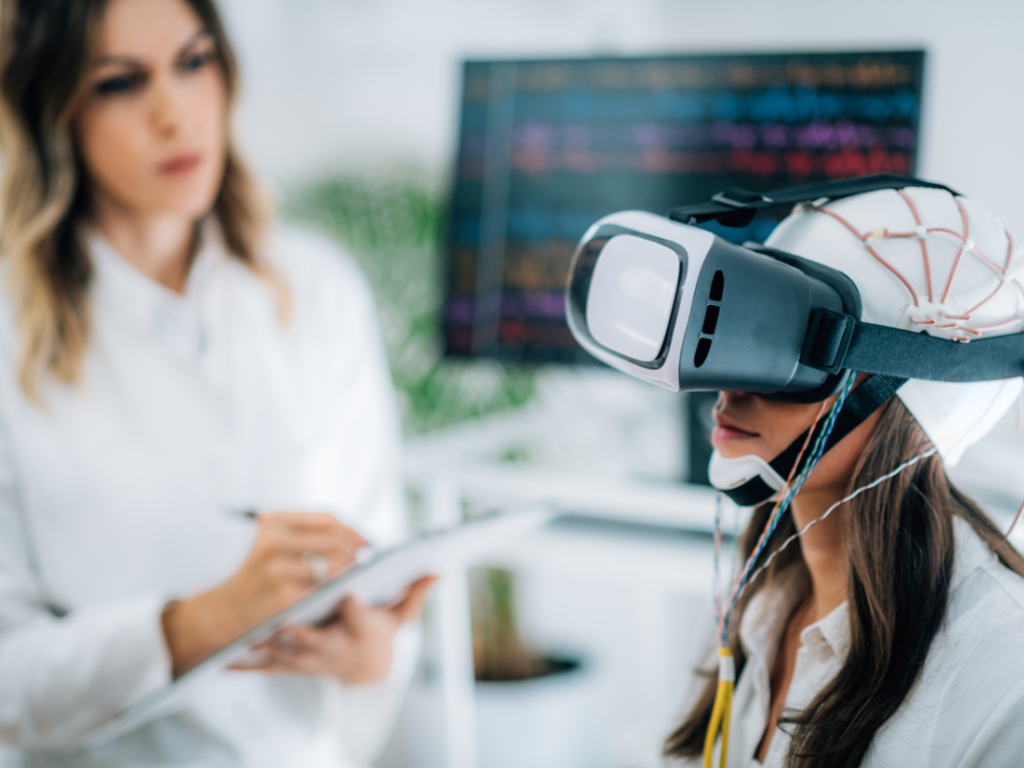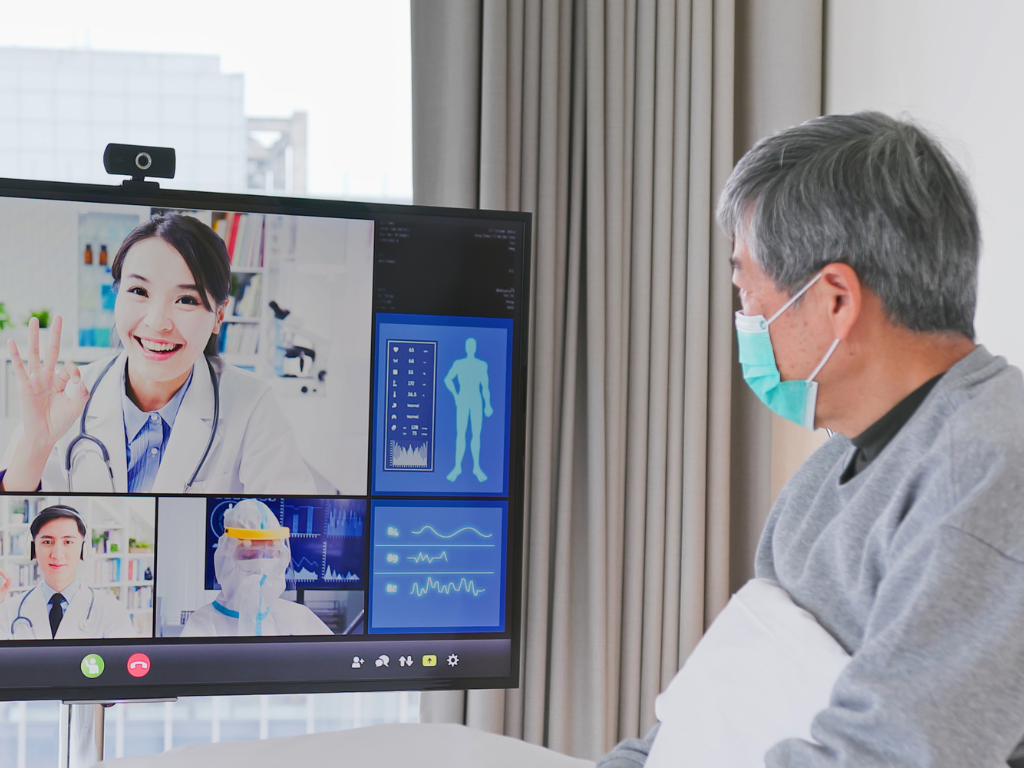For years, the healthcare industry has been facing the difficult task of striking a balance between providing high-quality care to patients and keeping costs to a minimum. In addition, health facilities also have to deal with staff shortages and the increasing prevalence of chronic diseases.
To address this multitude of demands, the healthcare industry must continue to innovate and adopt new technologies and processes to improve efficiency and patient outcomes. In this article, we will explore the future of healthcare technology.
Table of Contents
How Can Advanced Technologies Impact Healthcare?
There’s no denying that technology is evolving at such a rapid pace that it’s almost impossible to keep up with all the innovations and developments. This evolution leads to new opportunities in many fields, especially in healthcare.
Advanced technologies can have a significant impact on this sector by improving the quality of care, increasing efficiency, and expanding access to healthcare services. Here are some ways that the future of healthcare technology can affect overall patient care and outcomes:
Improved diagnosis and treatment
Providers and organizations can easily get their hands on tools and equipment that can analyze large amounts of patient data. This can help develop predictive models and provide personalized treatment recommendations, which then significantly improve the accuracy of diagnoses and increase the effectiveness of treatments.
Enhanced communication and collaboration
The future of healthcare technology involves remote consultations and processes. Technological advances like telemedicine and electronic health records (EHRs) can vastly improve communication and collaboration between healthcare providers, leading to more coordinated and efficient care.
Remote monitoring and care
Wearable devices and remote monitoring tools allow patients to monitor their health and receive care outside of traditional healthcare settings. As a result, they receive better disease management and improved patient outcomes. It can also help them seek medical attention immediately should there be an emergency.
Increased efficiency and cost savings
Robotics and automation in healthcare help organizations and providers streamline their operations by reducing the need for manual labor. This also results in reduced costs and increased efficiency. It ultimately leads to improved care delivery. The future of healthcare technology aims to address the pressing issue of labor shortage.
Improved access to care
Telemedicine and other digital health technologies can increase access to healthcare services, particularly for patients in remote or underserved areas. With the right tools, patients do not need to drive hours just to see their doctors. It’s now possible to do it in the comforts of their own home.

Future of Healthcare Technology: Top Innovations and Developments
The future of healthcare technology is being shaped by many new and emerging innovations that are transforming how patient care is delivered. Here are some of the innovations that are worth looking into
Artificial intelligence (AI) and machine learning
AI refers to the ability of computer systems to perform tasks that typically require human intelligence. On the other hand, machine learningis a subset of AI that involves using algorithms to analyze large amounts of data and develop predictive models.
In healthcare, you can use these technologies to analyze patient medical records, genetic data, and lifestyle factors to develop a predictive model for a specific disease or condition. This helps healthcare providers make more accurate diagnoses and provide more effective treatments.
One significant benefit of AI and machine learning in healthcare is that they can be used to automate administrative tasks, such as scheduling appointments or processing insurance claims. This frees up healthcare providers to focus more time and attention on patient care.
Internet of Things (IoT)
IoT refers to a network of physical devices that are embedded with sensors, software, and connectivity that enable them to collect and exchange data. In healthcare, IoT devices such as wearable sensors and remote monitoring tools allow continuous monitoring of patient health.
One of the key benefits of IoT devices in the health sector is that they can provide real-time data on patient health, enabling healthcare providers to detect and respond to changes in health status more quickly and accurately. There are also IoT devices that are designed to improve medication adherence.
Blockchain
Blockchain is a digital ledger, or a record-keeping system, that enables secure, transparent, and tamper-proof recording and sharing of data. In healthcare, this technology can help secure electronic health records (EHRs) and ensure patient data privacy while improving data accuracy and interoperability.
The healthcare industry has been facing security and privacy issues for decades, especially now that many organizations are shifting toward digital environments. Blockchain is designed to address these challenges by providing a decentralized, encrypted, and tamper-proof record of all transactions. This helps ensure that the data is secure and only accessible to authorized parties.
Aside from security issues, healthcare data can also be challenging to share and analyze. With blockchain, organizations and providers create a common platform for data exchange that is standardized, accessible, and transparent. This can enable healthcare providers to access complete and accurate patient data, leading to more informed and effective clinical decision-making.
Virtual and augmented reality
Virtual and augmented reality technologies are transforming the way healthcare is delivered by enhancing medical training, surgical planning, and patient education. Virtual reality (VR) immerses users in a simulated environment, while augmented reality (AR) overlays digital information onto the real world.
These technologies can simulate real-world life and allow healthcare professionals to practice and refine their skills in a safe, controlled environment. This helps produce confident and competent healthcare professionals.
In addition, VR and AR can provide surgeons with 3D models of patient anatomy, allowing them to visualize and plan complex procedures with greater precision and accuracy. This can reduce the risk of complications during surgery and improve patient outcomes.

How to Implement New Healthcare Technologies
Introducing new technologies to any practice can be challenging and intimidating, but there are several key steps that healthcare providers can take to ensure the successful adoption and integration of these technologies:
- Clearly define the problem or opportunity that the new technology is intended to address. This ensures that your new tools and equipment can align with the organization’s strategic objectives and that the expected benefits are clear.
- Assess the needs and capabilities of the organization, including the existing technology infrastructure, data management processes, and the readiness of staff to adopt new technologies.
- Choose a technology that is well-suited to the organization’s needs and capabilities. Some factors you need to consider are ease of use, compatibility with existing systems, and the level of support and training that will be required.
- Develop a comprehensive plan that includes timelines, roles and responsibilities, and metrics for success. The strategy should address issues such as data migration, system integration, training, and communication with stakeholders.
- Test the new technology in a controlled environment to identify and address any issues or limitations. Use feedback from users to refine the technology and make any necessary adjustments.
- Provide proper onboarding, training, and support to staff to ensure that they are prepared to use the new technology effectively.
- Monitor and evaluate the performance of the technology to ensure that it is delivering the expected benefits. Use data analytics to measure the impact of the technology on patient outcomes, costs, and other key metrics.

Step Into the Future of Healthcare Technology with Fill
Healthcare organizations must navigate a complex network of regulations, paperwork, and data management, which can be overwhelming and time-consuming. That’s where Fill comes in.
Fill is a cloud-based document management solution that can help the healthcare sector move towards a paperless environment. By digitizing and automating document management processes, you can reduce administrative burdens and improve efficiency. This can save you time and money, allowing you to focus on what really matters: providing quality patient care.
Our compliant electronic signature application is a secure platform that can help you enhance data security and increase accessibility. With our robust security features, Fill can help you ensure HIPAA compliance and minimize the risk of data breaches and security incidents. And with cloud-based storage, you can access your documents from anywhere, at any time, on any device, improving communication and collaboration among healthcare professionals.
Join the growing number of healthcare providers who are benefiting from digital document management. Sign up with Fill today and discover the wonders of a paperless environment.




